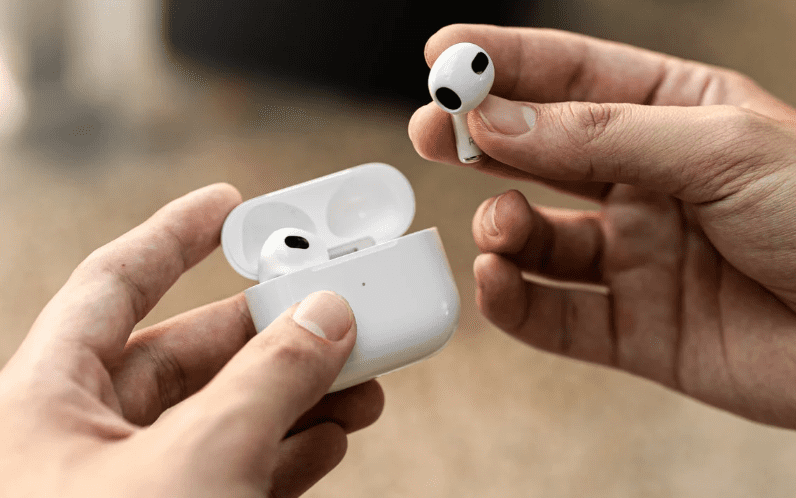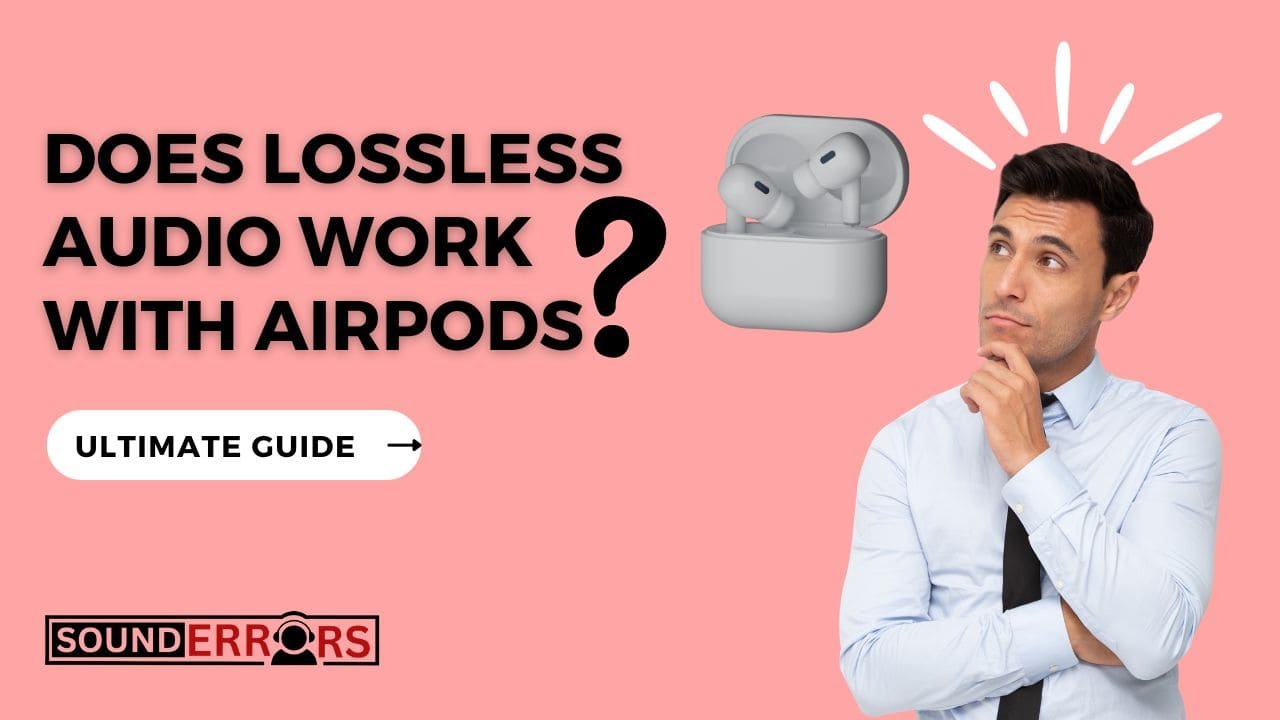This Post may contain affiliate links, when you purchase through links on our site, we may earn an affiliate commission at no extra cost to you. Here’s how it works.
In the ever-evolving realm of audio technology, the pursuit of perfect sound quality has become a never-ending quest.
Table of Contents
ToggleWith the recent introduction of lossless audio by Apple, audiophiles and music enthusiasts are eager to explore the potential of this high-fidelity format.
Quick Answer:
The only option is to connect a Lightning 3.5 mm Audio cable to AirPod Max, you can play lossless audio. Before doing this ensure you have a Lossless audio source to play with Airpods Max.
Understanding Lossless Audio:
Lossless audio is a format that retains all the original data and quality of the music file without any compression.
This means that every nuance, from the subtlest instrumental harmonies to the artist’s whispered breaths, is preserved with utmost precision.
Apple Music’s adoption of the Lossless and Hi-Res Lossless audio formats promises an unparalleled listening experience for those who crave the highest audio quality. Using YouTube with high-quality audio is normal, do you know whether youtube has lossless audio or not?
Does lossless audio work with AirPods?
No, AirPods, while offering a convenient wireless listening experience, fall short in lossless audio playback due to Bluetooth’s compression limitations.
Alternative methods are required to fully appreciate the uncompromised quality of lossless audio. Connecting AirPods to a lossless-compatible device via a wired connection bypasses Bluetooth compression and delivers the original audio fidelity.

Alternatively, utilizing a hi-fi audio system that supports lossless playback allows AirPods to seamlessly integrate into a high-quality listening setup. For casual listeners, the compressed audio may not be a noticeable concern.
However, for audiophiles or those seeking the purest audio experience, exploring alternative methods for lossless audio playback is recommended.
Apple’s Commitment to High-Quality Audio:
Apple, a pioneer in the tech industry, has consistently pushed the boundaries of audio quality.
In June 2021, Apple Music introduced two groundbreaking features: Spatial Audio and Lossless Audio.
Spatial audio delivers a captivating 3D audio experience, while Lossless Audio ensures that listeners can enjoy music in its purest form, without any degradation in quality.
More details about Apple’s lossless commitment.
AirPods and Their Audio Capabilities:
AirPods, Apple’s flagship wireless earbuds, have become a ubiquitous accessory for millions of users.
While the convenience of these earbuds is undeniable, questions arise about their ability to fully harness the potential of lossless audio.
AirPods Pro and AirPods Max, with their advanced audio technologies, are poised to deliver an immersive audio experience, but the key lies in the details.
The Limitations of Wireless Audio:
Despite their advanced capabilities, wireless earbuds, including AirPods, are bound by the limitations of Bluetooth technology.
Bluetooth, the standard for wireless audio transmission, employs compression algorithms to transmit audio wirelessly.
This compression, though efficient for everyday listening, introduces a degree of compromise in audio quality.
The Impact on Lossless Audio:
Lossless audio, designed to deliver an unadulterated sonic experience, faces challenges when transmitted via Bluetooth.
The compression applied during Bluetooth transmission can negate some of the advantages of lossless formats
While the difference may not be immediately apparent to the casual listener, audiophiles with a keen ear may discern subtle nuances that are lost in the wireless translation.
Optimizing the Experience:
Despite the inherent limitations of wireless transmission, there are steps one can take to optimize the lossless audio experience with AirPods.
Utilizing a wired connection, such as the Lightning-to-3.5mm headphone jack adapter for compatible AirPods models, can bypass the constraints of Bluetooth transmission.
This wired connection ensures that the lossless audio signal reaches the earbuds without any wireless interference.
How to listen to lossless on your iPhone or iPad
To listen to lossless audio on your iPhone or iPad, you’ll need to have an Apple Music subscription and an iPhone or iPad that supports lossless audio. You’ll also need to have a wired or wireless connection to the internet.
Here are the steps on how to turn on lossless audio on your iPhone or iPad:
- Open the Settings app.
- Tap Music.
- Tap Audio Quality.
- Tap Lossless Audio to turn it on.
- Choose the audio quality for streaming and downloading audio. You can choose Lossless for a maximum resolution of 24-bit/48 kHz, or Hi-Res Lossless for a maximum resolution of 24-bit/96 kHz.
Once you’ve turned on lossless audio, you can start listening to lossless music. To find lossless music, open the Apple Music app and search for “lossless.” You can also browse for lossless music by genre or artist.
Alternatives for Lossless Audio Enjoyment
While AirPods may not be ideal for lossless audio playback, there are alternative options for experiencing the full benefits of this technology.
High-end wired headphones and dedicated lossless audio players offer a more direct and uncompromised pathway for lossless audio transmission, ensuring that every nuance of the music is preserved.
Conclusion:
In the quest for audio perfection, the compatibility of lossless audio with AirPods is a nuanced journey, raising the question: “Does lossless audio work with AirPods?”
While wireless earbuds inherently face challenges in fully realizing the potential of lossless audio due to Bluetooth compression, Apple’s commitment to high-quality audio provides a glimmer of hope.
By understanding the limitations and optimizing the listening experience through wired connections, users can unlock a more faithful rendition of their favorite tunes.
The pursuit of sonic excellence continues, and as technology advances, the marriage of lossless audio and wireless earbuds, such as AirPods, may one day achieve a harmonious balance.
